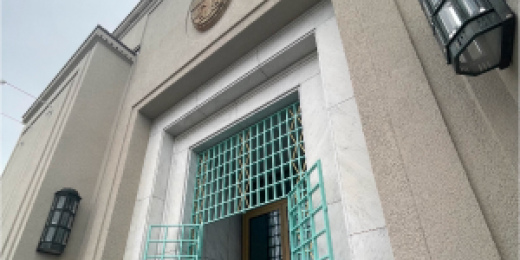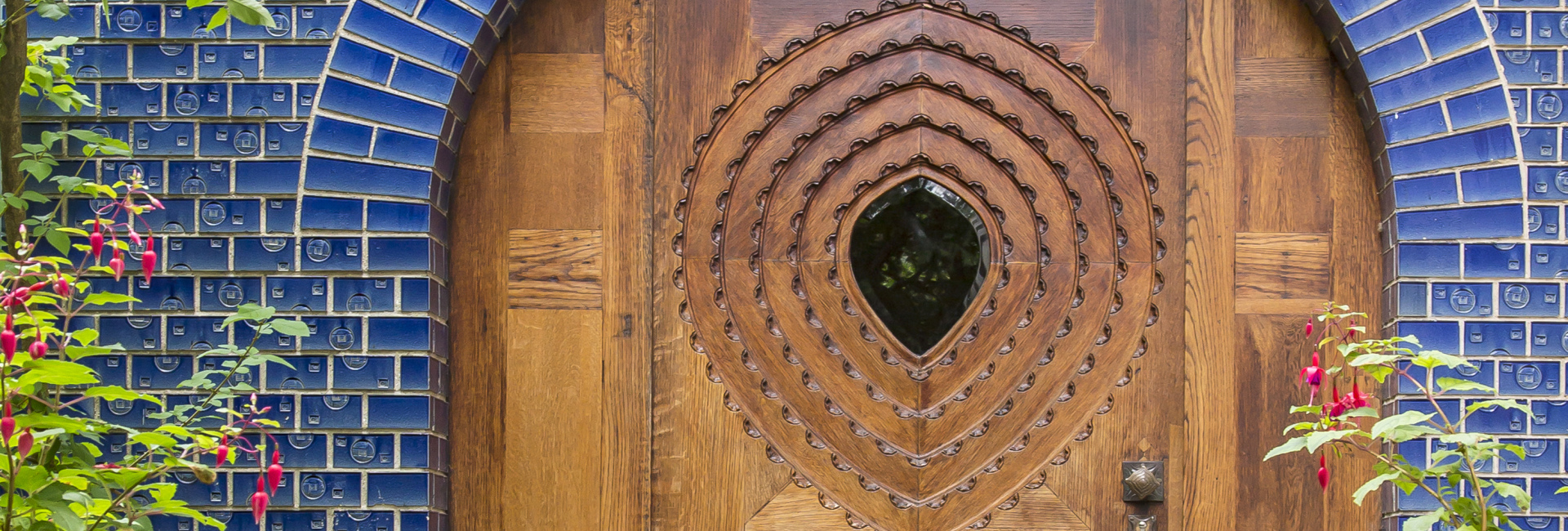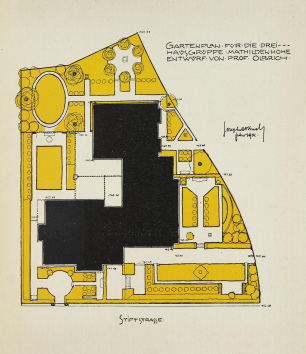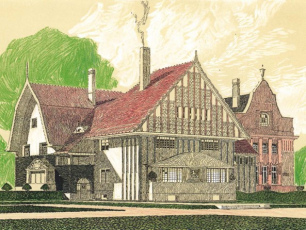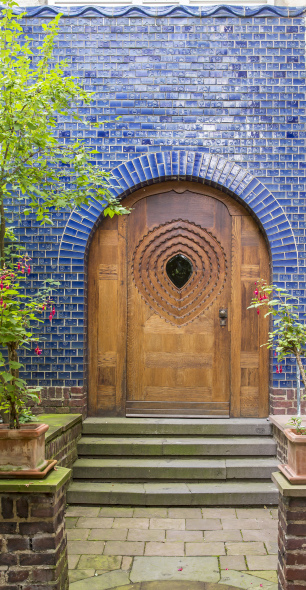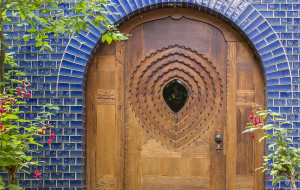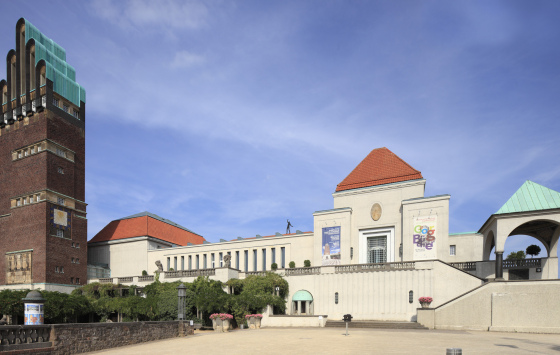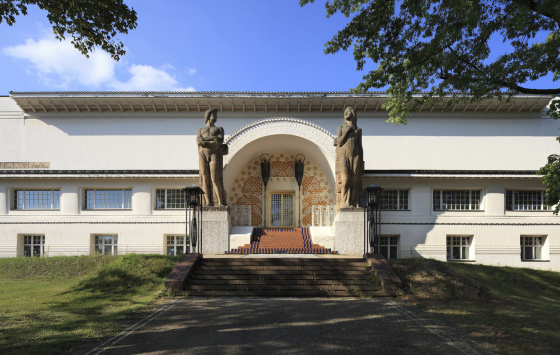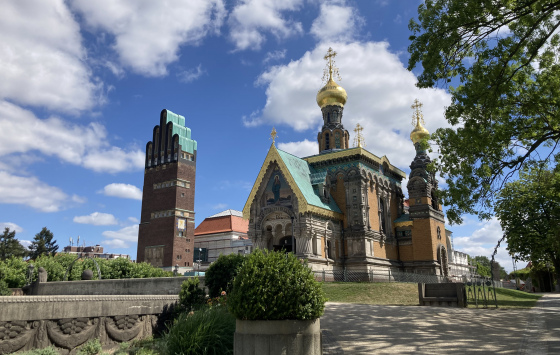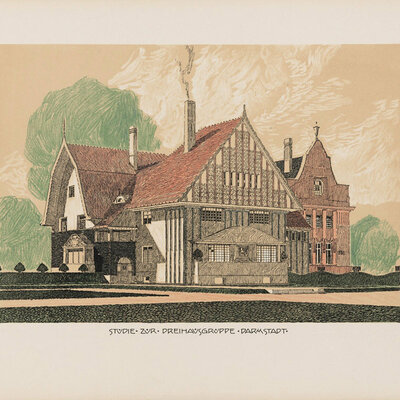
Three House Group
Architekt: Joseph Maria Olbrich
Bauphase: 1903 - 1904
As the only residential buildings of the 1904 exhibition of the artists' colony, an ensemble consisting of three houses was built on the corner of Stiftstraße and Prinz-Christians-Weg. Here too, the initiator was Grand Duke Ernst Ludwig. The group of houses was designed by the architect Joseph Maria Olbrich as an example of artistically designed homes "for the not overly well-off citizen". The "Blue House" and the "Timber Gable House" were for sale after completion, the "Grey House" served as the official residence of the court preacher Hermann Graf Keyserling, who established his "School of Wisdom" there.
The residential houses, separated from each other on the inside and each with a separate entrance, were designed to stand so close together on the irregularly cut plot of land that they looked like one building from the outside, even though they could be clearly distinguished from each other by the different originally designed gables.
However, the architectural independence of these show houses was externally concealed by artistic means. For instance, the blue-glazed bricks of the "Blue House" were continued above the entrance of the corner house. In turn, the vertical red-brown clinker strips characteristic of this building continued at the corner pavilion of the neighbouring "Grey House".
All three houses were surrounded by gardens merging into one another without separating fences.
The Blue House
This west-facing residential house with its gable towards the street was decoratively clad with blue-glazed bricks, some of them with an embossed stylised rose. The remaining wall surfaces were plastered white. A white bay window with curved top in the west was placed in front of the blue tiled wall and corresponded with the strongly profiled, striking white gable. In the north, the house was extended with a semi-circular bay window for the entrance and staircase. The striking gable, the western bay window and some parts of the facade were lost during the war and the reconstruction was carried out in a simplified way.
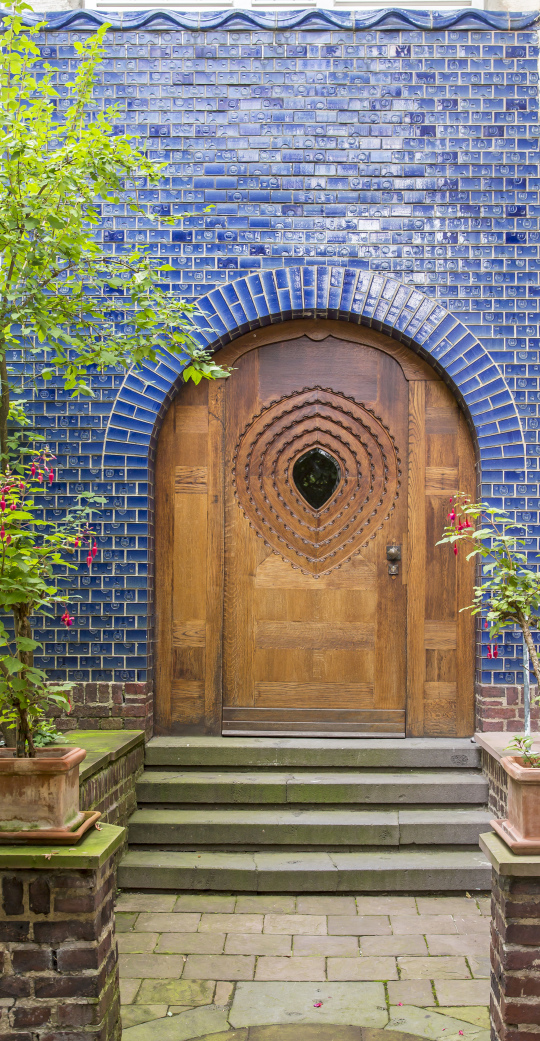
The Timber Gabled House (corner house)
The gable characterising the corner house was structured by vertical wooden beams with plastered spaces between them decorated in golden yellow ornamentation. Beneath, a wide bay window with curved roofing emphasised the homely atmosphere. The roof slope to the west was decorated with a heraldic ornament of coloured tiles. The walls of the house plastered in white were emphasised by vertical brown-red clinker pilaster-strips. With its wooden decor, orange-yellow colouring and the protruding roof, the Timber Gabled House was reminiscent of a Swiss country house.
Despite war-related damage, the interior of the house has been preserved up to the first floor; the outer walls with the clinker pilaster-strips, the entrance area and the curved walled enclosure have also been preserved.
The Grey House
The court chaplain’s house, which was set back somewhat in line with the course of the road, had a high, upward-moving gable. The red sandstone and the rough-plastered grey surfaces were a decorative contrast to the white window frames. Two seraphim designed by Daniel Greiner adorned the south-facing gable. A bronze front door with a relief by Ludwig Habich corresponded to the dignified purpose of this house. The "School of Wisdom" was closed under National Socialist rule, the house was severely damaged in 1944, and the ruins were replaced by a simple new building.



